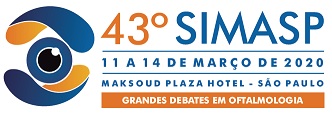Dados do Trabalho
Título
COMPARATIVE ANALYSIS ON INTRAOPERATIVE COMPLICATIONS IN FIRST PHACOEMULSIFICATION SURGERIES AMONG SECOND YEAR RESIDENTS WITH AND WITHOUT DRY-LAB EXPERIENCE
Introdução
Phacoemulsification is the one of the most performed surgical procedures in the world. Considering its learning curve, most teaching institutions demand residents to perform wetlab training before allowing procedures in patients. Classically, surgeons are initially subjected to animal model training with slaughter house porcine eyes which, despite their similarity to the human eye, do not provide a perfect platform for learning. In recent times, virtual reality has been used to assist phacoemulsification training in a model called dry-lab(1). Among the currently available models, EyeSi® (Vrmagic®, Mannheim, Germany) has demonstrated to improve surgical skills and to reduce learning curve. Considering that dry-lab training became obligatory for first year residents in Unifesp in 2017 we decided to perform a retrospective study comparing intraoperative complications among residents with and without dry-lab training in the first 40 surgeries.
Métodos
This is a retrospective cohort study. Intraoperative complications data was collected from surgeries performed in Unifesp by second year residents of 2017 (without Eyesi® training) and 2018 (with Eyesi® training). Surgery complications were divided based on anatomy/surgical step as follows: incision, anterior capsule, posterior capsule, capsular bag (disinsertion), Descemet's membrane (detachment). Data from the first 40 surgeries of six second year residents, was collected and then analyzed using Chi square test for independence for total complication index and posterior capsular rupture, due to it`s relation to bad visual outcomes.
Resultados
Six residents were evaluated each year, generating a total of 240 surgeries in each group. Total complication rate for residents with and without dry-lab training were respectively 51 (21.25%) over 54 (22.5%) [p=0.064]; posterior capsule rate with and without dry-lab training were respectively 17(7.08%) over 31( 12.91%) (p=0.032). Other complications indices can be seen in table 1, and representative rates between groups in figure 1,
Conclusões
The ideal phacoemulsification training is yet to find. Dry-lab training can be adequate and reproducible, as demonstrated in other studies, however a thorough study is required to achieve a trustworthy result outcome. In our studies we found a reduction in the posterior capsule rupture index with dry lab training, but not in the total complication index.
Palavras Chave
EYESI FACOEMULSIFICAÇÃO RESIDENTE
Arquivos
Área
Catarata
Instituições
Universidade Federal de São Paulo - São Paulo - Brasil
Autores
ALLYNE MOTA KALAF, IBRAIN V VIEIRA, BRUNO N SAKAYA, RICHARD YUDI HIDA, WALLACE CHAMON
